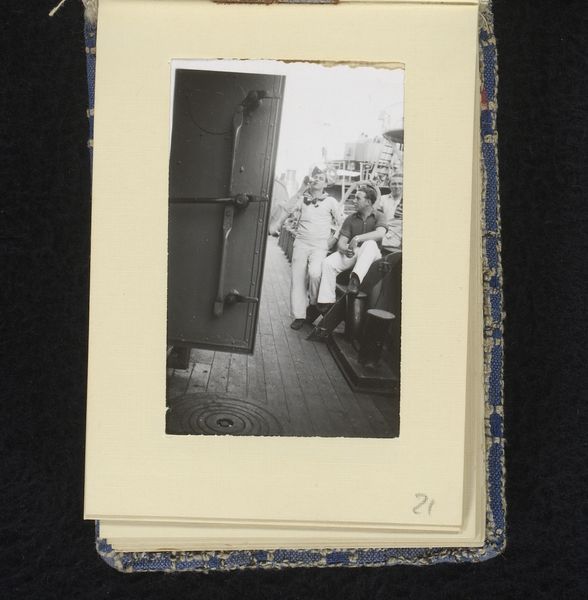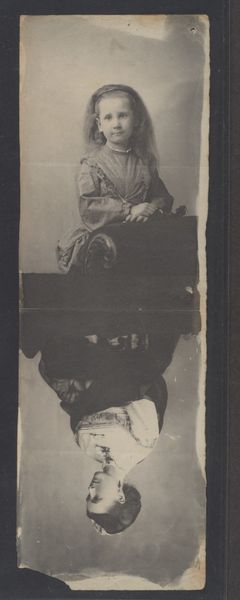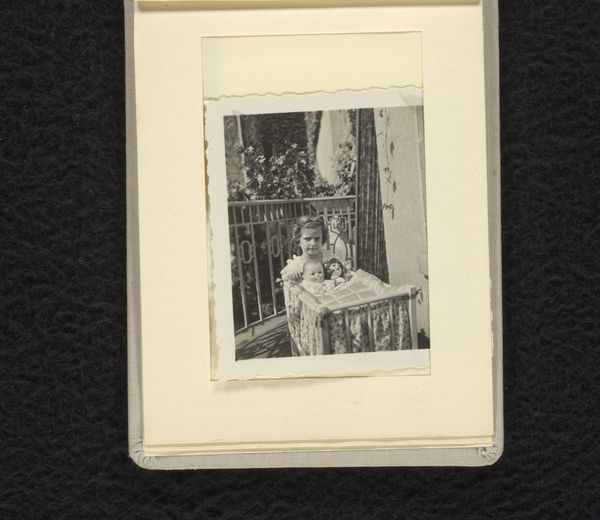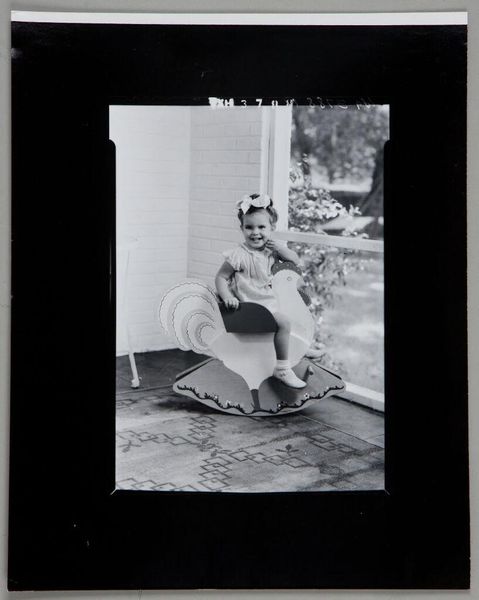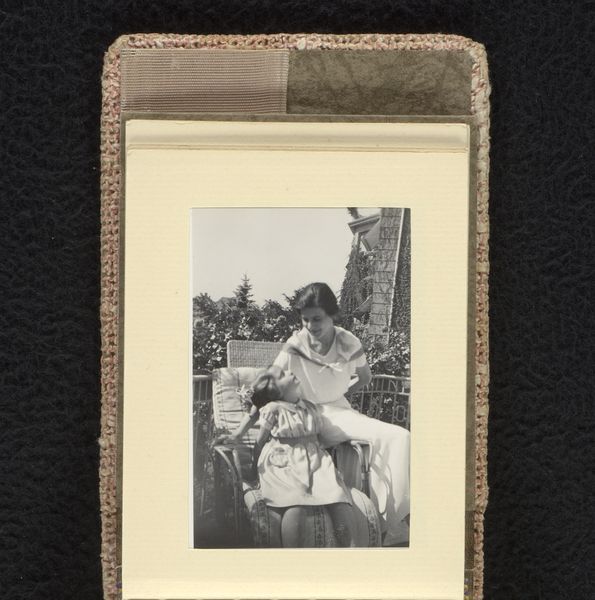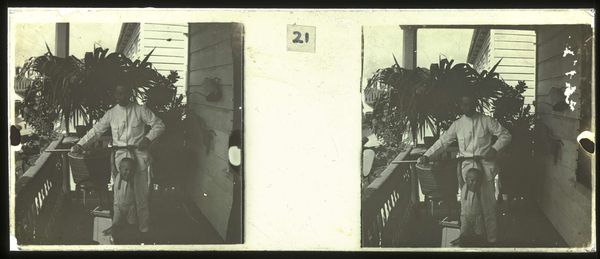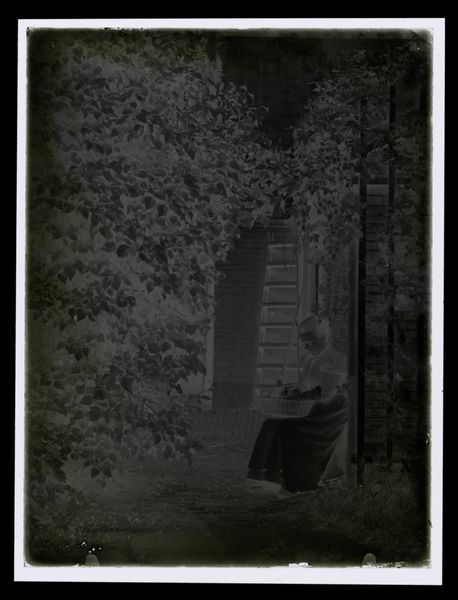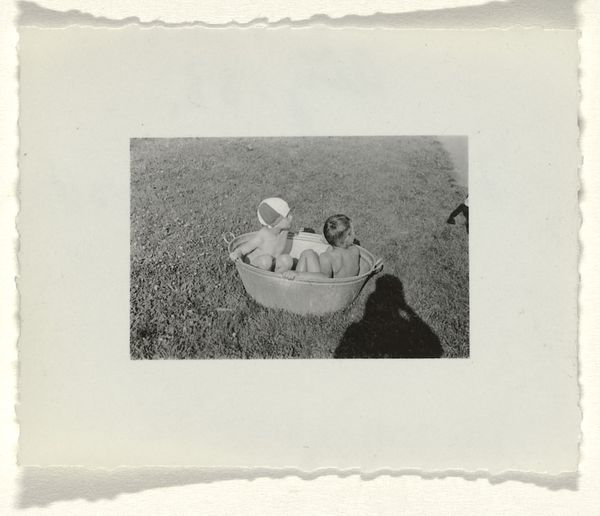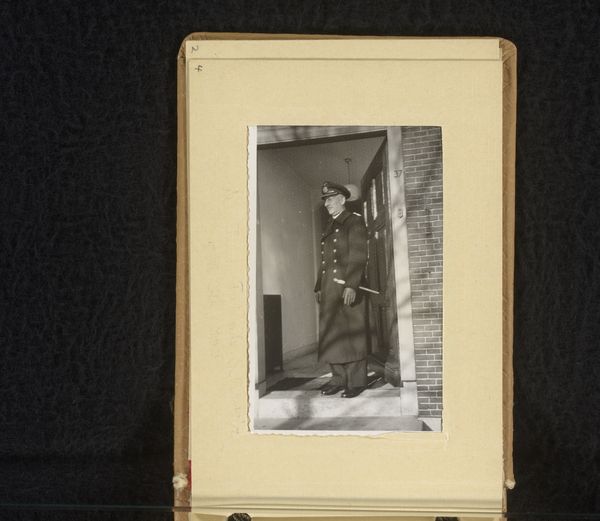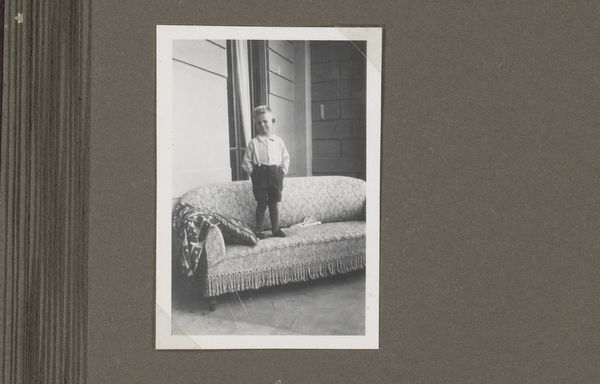
Groepsportret van Heinrich Clausen, Takce en Hiller bij de trap naar de woonkamer 1941 - 1945
0:00
0:00
photography
#
portrait
#
photography
#
genre-painting
#
realism
Dimensions: height 87 mm, width 62 mm
Copyright: Rijks Museum: Open Domain
Curator: This photograph, "Groepsportret van Heinrich Clausen, Takce en Hiller bij de trap naar de woonkamer," dating from the period of 1941-1945, captures a moment in what seems like everyday life. The medium is photography and its qualities make it fit into the style of realism, although it also displays genre painting themes. Editor: The tonal range is so limited; a very narrow band of grays. Despite this, there’s a definite, albeit muted, sense of comfort evoked by the grouping and setting. The starkness almost enhances that feeling of an intimate peek into private life, domestic life. Curator: It’s interesting how you key into the comfort. Looking at this through the lens of its historical moment, I’m more aware of the context of its making: who had access to photographic materials during wartime in Europe? The resources, the labour, the privilege inherent in the act of capturing such a scene… It certainly speaks to a specific socio-economic position during a period of tremendous upheaval and war. Editor: I agree it’s important to acknowledge that access. But thinking formally, the composition contributes too; notice how the geometric rigidity of the brick wall and the staircase is softened by the organic shapes of the figures. That doorway becomes a framing device. The light, though limited, throws these compelling shadows on the stairs… it's visually interesting. The arrangement of shapes directs your eyes to different aspects. Curator: True, there's a tension created by that geometric backdrop – perhaps hinting at the structured limitations of wartime life – juxtaposed against the relaxed postures of the figures. These people clearly have a safe, controlled environment in times of unrest. That fact makes me wonder who they were, what their roles were in the broader social fabric during this era. Were they active participants or simply bystanders? Editor: You draw out such important social layers. For me, stepping back and just considering the aesthetic – it's quite intriguing how such simple visual elements yield such complex interpretive possibilities. Curator: It truly encapsulates how a seemingly mundane snapshot can unlock rich dialogues concerning process, resources, and the realities of daily existence amidst larger historical forces.
Comments
No comments
Be the first to comment and join the conversation on the ultimate creative platform.
